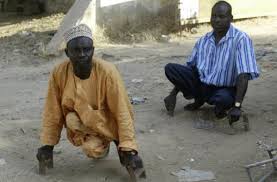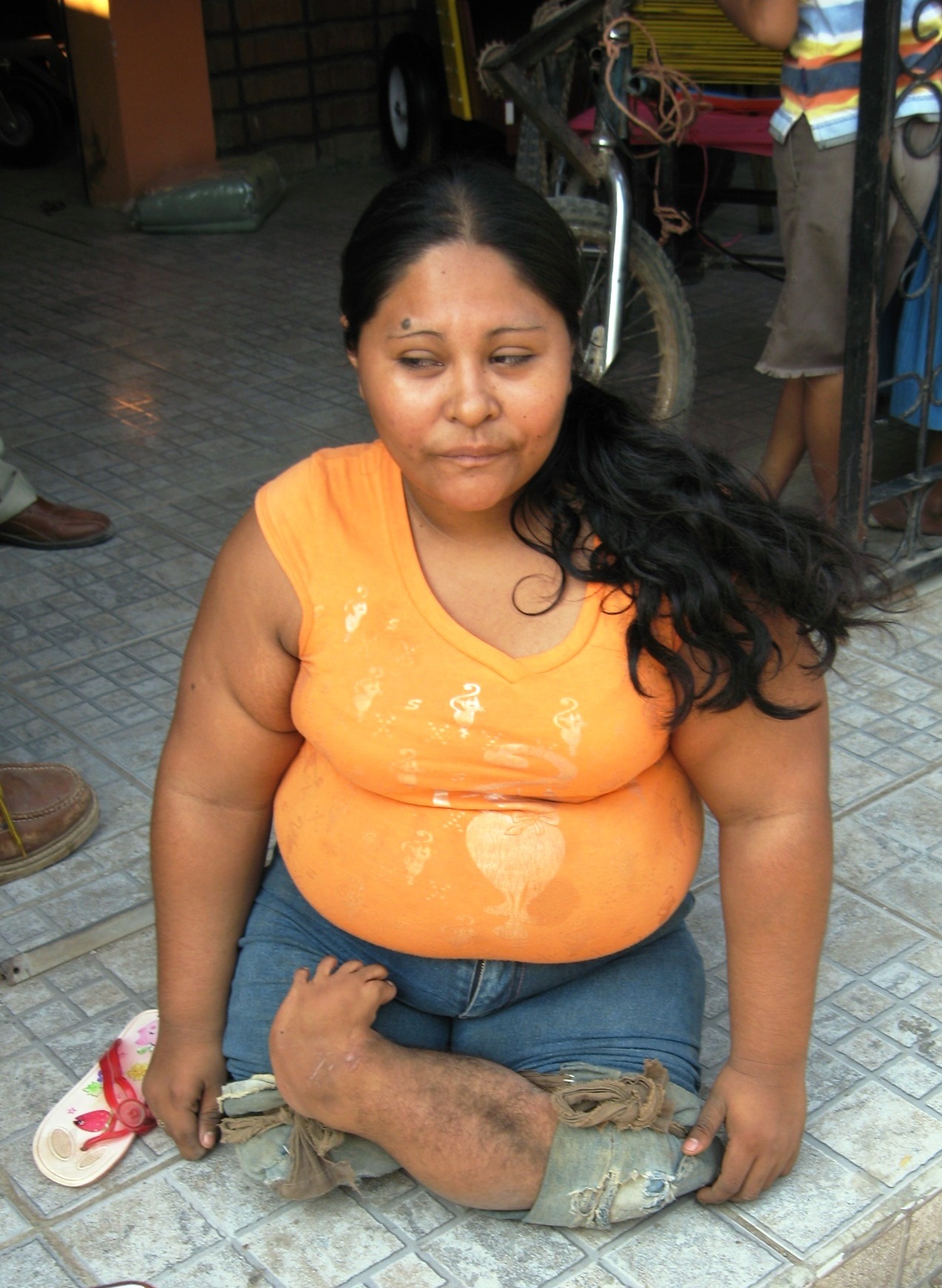Polio also known as poliomyelitis and infantile paralysis is a highly contagious viral infection that can lead to paralysis, breathing problems, or even death
.
Polio can be classified as either symptomatic or asymptomatic (with or without symptoms). About 95 percent of all cases are asymptomatic and 4-8 percent of cases are symptomatic.
Fast facts on polio
Here are some key points about polio. More detail and supporting information is in the main article.
- Polio is caused by the poliovirus
- The vast majority of polio infections present no symptoms
- Polio has been eradicated in every country of the world except for Pakistan and Afghanistan
- Polio re-emerged in Borno state of Northern Nigeria (4th September 2016)
- Pregnant women are more susceptible to polio
- Around half of polio patients go on to have post-polio syndrome
Types of polio
![[Pink polio virus]](http://cdn1.medicalnewstoday.com/content/images/articles/155/155580/pink-polio-virus.jpg) Polio is caused by the poliovirus.
Polio is caused by the poliovirus.
Symptomatic polio can be broken down further into a mild form, called non-paralytic or abortive polio, and a severe form called paralytic polio (occurring in around 1 percent of cases).
Paralytic polio may also be classified as:
- Spinal polio - attacks motor neurons in the spinal cord and causes paralysis in the arms and legs and breathing problems
- Bulbar polio - affects the neurons responsible for sight, taste, swallowing, and breathing
- Bulbospinal polio - symptoms of both spinal and bulbar polio
Many people with non-paralytic polio make a full recovery while those with paralytic polio generally end up with permanent paralysis.
Polio used to be a big killer. Today, polio has been eradicated in all but two countries - Pakistan and Afghanistan. If polio is completely eradicated, it will be only the third disease to have been beaten in this way after smallpox and rinderpest.
The World Health Organization (WHO) hopes to achieve global eradication of polio by 2018.
Who gets polio?
Like many other infectious diseases, polio victims tend to be some of the most vulnerable members of the population. This includes the very young, pregnant women and those with immune systems that are substantially weakened by other medical conditions.
Anyone who has not been immunized against polio is especially susceptible to contracting the infection.
Additional risk factors for polio include:
- Traveling to places where polio is endemic or widespread, especially Pakistan and Afghanistan
- Living with someone infected with polio
- Having a weak immune system
- Pregnant women are more susceptible to polio, but it does not appear to affect the unborn child
- Working in a laboratory where live polio virus is kept
Causes and transmission of polio
Polio is caused by the poliovirus, a highly contagious virus specific to humans. The virus usually enters the environment in the feces of someone who is infected. In areas with poor sanitation, the virus easily spreads from feces into the water supply, or, by touch, into food.
In addition, because polio is so contagious, direct contact with a person infected with the virus can cause polio. Individuals who carry the poliovirus can spread it via their feces for weeks, even if they have shown no symptoms themselves.
Once the virus has entered an individual, it infects the cells of the throat and intestine. It takes over the host's cellular machinery and begins to replicate. The virus stays within the intestines, rapidly dividing for a week, before spreading to other areas of the body. Eventually, the virus moves into the bloodstream where it can spread to the entire body.
Symptoms of polio
Polio, in its most debilitating forms, displays symptoms such as paralysis and death. However, most people with polio don't display any symptoms or become noticeably sick. When symptoms do appear, they differ depending on the type of polio.
Non-paralytic polio
Non-paralytic polio, also called abortive poliomyelitis, leads to flu-like symptoms that last for a few days or weeks. Symptoms include:
- Fever
- Sore throat
- Headache
- Vomiting
- Fatigue
- Back and neck pain
- Arm and leg stiffness
- Muscle tenderness and spasms
- Meningitis - an infection of the membranes surrounding the brain
 |
| Polio Victims |
Paralytic polio
Paralytic polio affects only a small percentage of those invaded by the polio virus. In these cases, the virus enters motor neurons where it replicates and destroys the cells. These cells are normally in the spinal cord, brain stem, or motor cortex - an area of the brain important in controlling movements.
Symptoms of paralytic polio often start in a similar way to non-paralytic polio, but later progress to more serious symptoms such as:
- A loss of muscle reflexes
- Severe muscle pain and spasms
- Loose or floppy limbs that are often worse on one side of the body
Post-polio syndrome
Post-polio syndrome describes a cluster of symptoms that affect up to 50 percent of all polio patients. It occurs several years after polio has passed. On average, post-polio syndrome occurs 35 years after the infection.
Signs and symptoms include:
- Muscle and joint pain and weakness that slowly progresses
- Muscle atrophy (shrinking)
- Exhaustion for no reason
- Swallowing and breathing difficulties
- Suffering in colder temperatures
- Sleep-related problems such as apnea (stopping breathing)
- Concentration and memory difficulties
- Mood swings and depression
Post-polio syndrome is a slow, progressive disease. There is no cure, but it is not infectious or contagious.
Diagnosis of polio
Polio is often recognized because of symptoms, such as neck and back stiffness, abnormal reflexes, and trouble with swallowing and breathing. A physician who suspects polio will perform laboratory tests that check for poliovirus by examining throat secretions, stool samples, or cerebrospinal fluid.
Treatments for polio
There is no cure for polio once a person becomes infected. Therefore, treatments are focused on increasing comfort, managing symptoms, and preventing complications. This can include providing bed rest, antibiotics for additional infections, pain killers, ventilators to help breathing, physiotherapy, and moderate exercise, and a proper diet.
Historically, lung paralysis due to polio was treated by placing the patient into an iron lung - a device that would push and pull chest muscles to make them work. However, more modern portable ventilators and jacket-type ventilators are now used instead.
Polio prevention
Although polio has essentially been eradicated in the United States since 1979 and in the Western Hemisphere since 1991, children and adults in Afghanistan and Pakistan are still battling the disease. There are two vaccines available to fight polio - inactivated polio virus (IPV) and oral polio vaccine (OPV).
IPV consists of a series of injections that start two months after birth and continue until the child is 4-6 years old. This version of the vaccine is provided to most children in the U.S. The vaccine is made from inactive poliovirus, but it is very safe and effective and cannot cause polio.
OPV is created from a weakened (attenuated) form of poliovirus; this version is the vaccine of choice in many countries because it is low cost, easy to administer, and gives an excellent level of immunity. OPV, however, has been known to revert to a dangerous form of poliovirus that is able to paralyze the patient.
Polio vaccinations, or boosters, are highly recommended for anyone who is not vaccinated or is unsure whether they are.


![[Pink polio virus]](http://cdn1.medicalnewstoday.com/content/images/articles/155/155580/pink-polio-virus.jpg)







No comments
Post a Comment